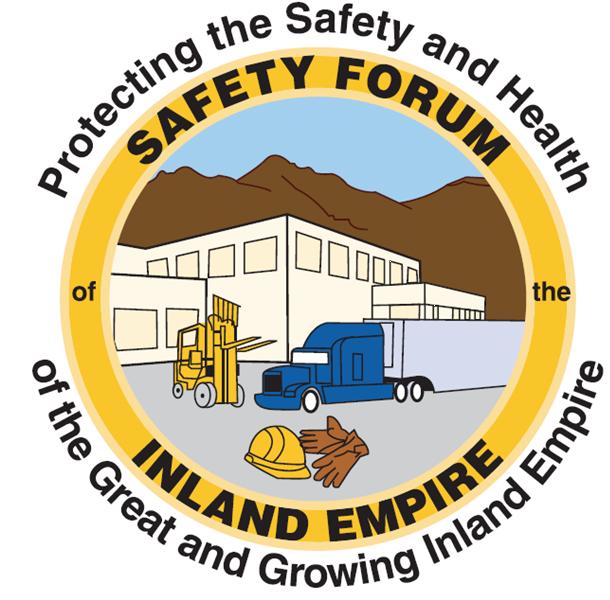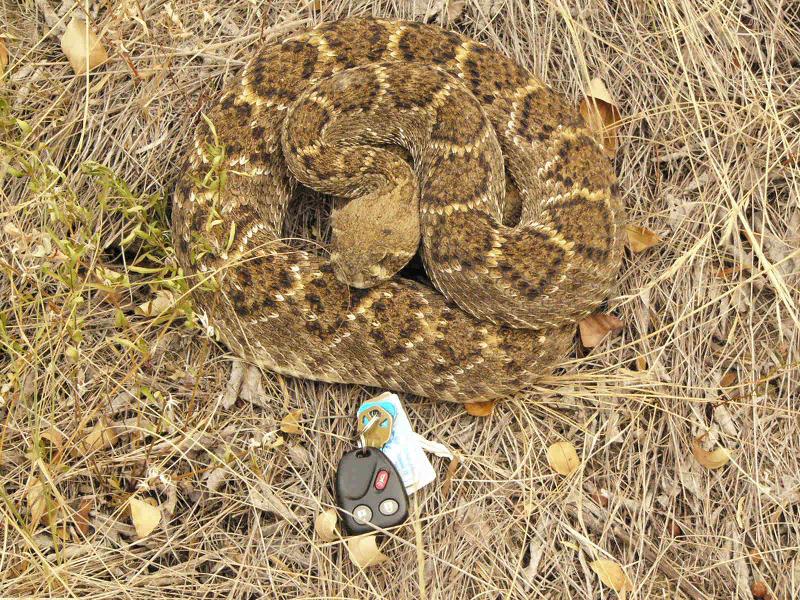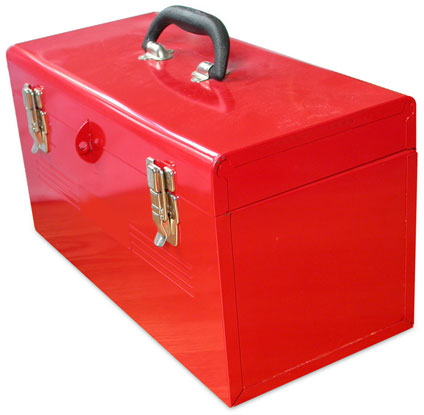|
| |
OSHA Safety School
Did you know OSHA regulates power lawnmowers for use at a workplace?
OSHA recognizes that businesses often have lawns that need to be mowed and has a number of requirements addressing lawnmowers. Concerning "machine guarding" for walk-behind, riding-rotary, and reel power lawnmowers, OSHA specifies...
Consider these three response options:
(1) Walk-behind power lawnmowers designed for sale to the general public shall not be used at workplaces
(2) Walk-behind power lawnmowers must be guarded in accordance with the machine guarding requirements in 1910.212
3) Power lawnmowers designed for sale to the general public may be utilized by contract lawn services but not by employees of the business
After you decide which of the above is the best response, click here to check your answer
|
|
Safety Forums
|

August 14, 2012
Presented by
George Joyner, CSMS -
Park and Rec Dept,
City of Ontario
or by phone (909) 625-9650
|
Contact Info | 
Sacramento Campus 3909 Bradshaw Road Sacramento CA 95827 (800) 825-7262 (916) 366-1230 FAX email: workplacesafety@safetycenter.org website  
Claremont Campus 109 S Spring Street Claremont CA 91711 (909) 625-9650 (909) 625-9652 FAX email: workplacesafetysc@safetycenter.org
website 
|
|
Donate
|
Safety Center is a non-profit 501(c)3 organization founded in 1934 whose mission is to reduce injuries and save lives by providing safety education and training. We accomplish this mission by promoting lifelong safety and health through a variety of community and professional programs.
Safety Center provides important safety education for children, teens and adults to keep them safe in the community, on the road and on the job. We need your help in supporting these valuable programs and your generous donation in any amount would be sincerely appreciated.
|
|
 Save $50* Save $50*
|
Enroll between now and August 31, 2012 to receive savings on your open enrollment classes. Just mention offer #CCIS0812 to receive your discount. Don't miss out. Register now!
*Discount does not apply to IVES Mobile Equipment Training, On-Site Classes, First Aid/CPR, DDC-4, CLPCCD OSHA or Refresher Courses. | Offer Expires:
August 31, 2012 |
|
|
|
Vol 12, Issue 8
|
August 2012
| |
|
Greetings!
How effective is your Injury and Illness Prevention Plan (IIPP)? This month, Safety Center Instructor, Annette Pleis, offers valuable tips and tools to help you make sure your IIPP is both effective and compliant.
Loss occurs when we neglect to follow through on actions we ought to take, or when we fail to take the correct action. In August Points to Ponder, Bob Lapidus discusses how improper expectations, rules and procedures cause loss. Learn how establishing the correct instructions up front mitigates the chance for injury.
It's hot out there these days, and the rattlesnakes love it! Check out our Safety Alert on rattlesnake safety on the jobsite.
Don't miss an issue, subscribe! You may also sign up to receive our other mailings including class updates and information on the Sacramento Regional Safety Forum and the Safety Forum of the Inland Empire. Save on your next training at Safety Center with the discount coupon below.
|
Injury and Illness Prevention Plan (IIPP) | |  How Effective is Your IIPP? How Effective is Your IIPP?
by Annette Pleis, Safety Center Instructor
In California, every employer has a legal obligation to provide and maintain a safe and healthful workplace for employees, according to the California Occupational Safety and Health Act of 1973.
A well managed IIPP, with good employee involvement, reduces costs and improves the safety and health in your workplace. The eight required elements of an IIPP are: Responsibility, Compliance, Communication, Hazard Assessment, Accident/Exposure Investigation, Hazard Correction, Training and Instruction, and Recordkeeping. To be effective, your IIPP must:
- Fully involve all employees, supervisors and management
- Identify the specific workplace hazards employees are exposed to
- Correct identified hazards in an appropriate and timely manner
- Provide effective training
As of 1991, Title 8 of the California Code of Regulations (T8CCR) GISO section 3203, requires every employer to develop and implement an effective IIPP. Failure to have an effective IIPP consistently ranks among most frequent Cal/OSHA citations.
You must regularly review and update your IIPP in order for it to remain effective. Still not sure whether your IIPP is effective? Evaluate your organization with these helpful tools: An effective IIPP shows commitment to maintaining an injury-free and illness-free workplace, and compliance with all applicable laws and regulations governing workplace safety.
Safety Center Incorporated is here to help. Our courses and classes are designed to assist with understanding the regulations, the key components and the health & safety needs of your organization.
Annette Pleis utilizes her experience and training in management, marketing and law enforcement to provide interactive, down-to-earth presentations. She continues to pursue safety education with passion and enthusiasm, participating in many OSHA training courses and will soon receive her Certified Safety Management Specialist (CSMS) designation.
|
Points to Ponder
| | |
Loss Causes: Creating Improper Expectations, Policies, Procedures or Rules
By Bob Lapidus, CSP, CSMS
Have you ever sent an email to someone, noted you had attached a document to the message and learned later you did not attach the document?
Our minds are plagued with so much information today that we often neglect to follow through on actions we ought to take or we fail to take the correct action. Such is the case when it comes to creating expectations, policies, procedures or rules.
One cause for occupational accidents, injuries, and illnesses is creating improper expectations, policies, procedures or rules. Why such directives are created improperly or literally wrong is due to:
- Incorrect information or data. Whether you or someone else retrieved the wrong facts does not matter. What matters is you have it wrong and you base your directives on this incorrect information.
- Having the wrong mission. You are trying to do something for which there is no reason to do it or the target for which you are aiming is not the right one.
- Lack of thorough analysis. You are dealing with the symptoms of what is wrong rather than the root causes. Instead of targeting that which needs to be foundationally accomplished, you are targeting superficial issues that do not correct the bottom line issues.
To reduce your chances of creating improper expectations, policies, procedures or rules:
- Dig deeper in everything you do to obtain the right information. Research. Ask.
- Double check your data.
- Have one or more people peer-review your documents to ensure they are correct.
- Meet with your stakeholders; receive their input, and customize your directives to fit the reality of your organization's style of management, culture, and actual status.
- Review your directives at least annually to make sure they are current and have not gone out of date.
The reasons for creating improper documents and the steps to take to reduce making such errors apply to everything in the work environment. Applying these steps to preventing losses is more critical because improper directives could lead to catastrophic mishaps. Establishing the correct instructions up front mitigates the chance for injury.
The ideas for Points to Ponder articles come from Safety Center's 12-day Safety Management Specialist Certificate (CSMS) program, and from Safety Center's short course entitled Safety Management for Employees-Who Supervise. Check out these course descriptions-- Professional Safety Management or contact Quen Cach in the Northern California office at 800-825-7262 or Gayleen Grigoreas in the Southern California office at 909-625-9650.
|
Safety Alert | | 
Rattlesnakes on Your Jobsite?!
Although most snakes in the state are harmless, we want to remind you to steer clear of the venomous rattlesnake and know what to do if one strikes.
You don't have to be in the great outdoors to discover a snake. They can be found in your garden, your garage and sometimes even your jobsite!
Rattlesnakes are generally not aggressive and usually strike only when threatened or deliberately provoked. Given room, they will retreat. Most snake bites occur when a rattlesnake is handled or accidentally touched. The majority of snakebites occur on the hands, feet and ankles.
On rare occasions, rattlesnakes can cause serious injury to humans. The California Poison Control Center notes that rattlesnakes account for more than 800 bites each year in the U.S. with one to two deaths. Most bites occur between the months of April and October when snakes and humans are most active outdoors.
Startled rattlesnakes may not rattle before striking defensively. Follow these safety precautions to reduce the likelihood of startling a rattlesnake.
Some dos and don'ts in snake country:
- Avoid tall grass, weeds and heavy underbrush where snakes may hide during the day.
- Do not step or put your hands where you cannot see.
- Step ON logs and rocks, never over them.
- Check out stumps or logs before sitting down.
- Be careful when stepping over doorsteps as well. Snakes like to crawl along the edge of buildings where they are protected on one side.
- Do not handle a freshly killed snake, as it can still inject venom.
What to do in the event of a snake bite:
- Stay calm.
- Wash the bite area gently with soap and water.
- Remove watches, rings, etc, which may constrict swelling.
- Immobilize the affected area.
- Transport safely to the nearest medical facility.
What you should NOT do after a rattlesnake bite:
- DON'T apply a tourniquet.
- DON'T pack the bite area in ice.
- DON'T cut the wound with a knife or razor.
- DON'T use your mouth to suck out the venom.
- DON'T let the victim drink alcohol.
More information about rattlesnakes can be found at the following websites:
|
|
Safety Toolbox |
|  Video of the Month:
E17 Employee Safety Training
Use this video as you introduce your Injury and Illness Prevention Plan (IIPP). Get common sense instruction and tips about proper work procedures and safety rules.
DVD or VHS 12 min.
If you would like more information about renting safety training videos or would like the most current catalog, view the English catalog, Spanish catalog or contact our librarian at (800) 825-7262 x 240 or by email. 
Resources: |
Member Updates
| |  Welcome New Members! Welcome New Members!
The Dentists Insurance Company
Member of the Month
Napa Sanitation District
For more information about membership with Safety Center and its benefits, visit our membership pages online or contact our Membership Coordinator at (800) 825-7262 x 214 or by email.
|
|
Thank you for your commitment to workplace safety and health!
|
|
|